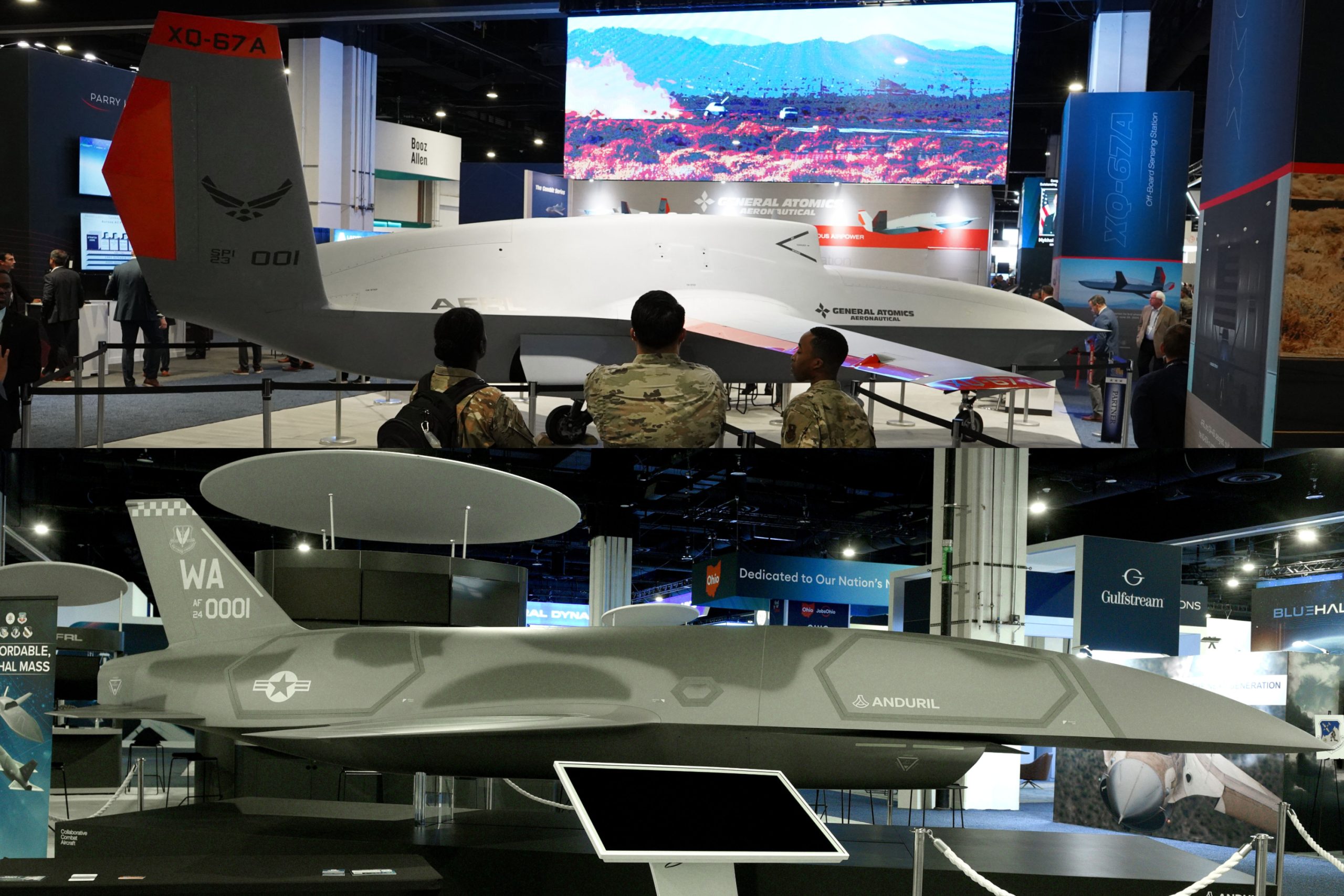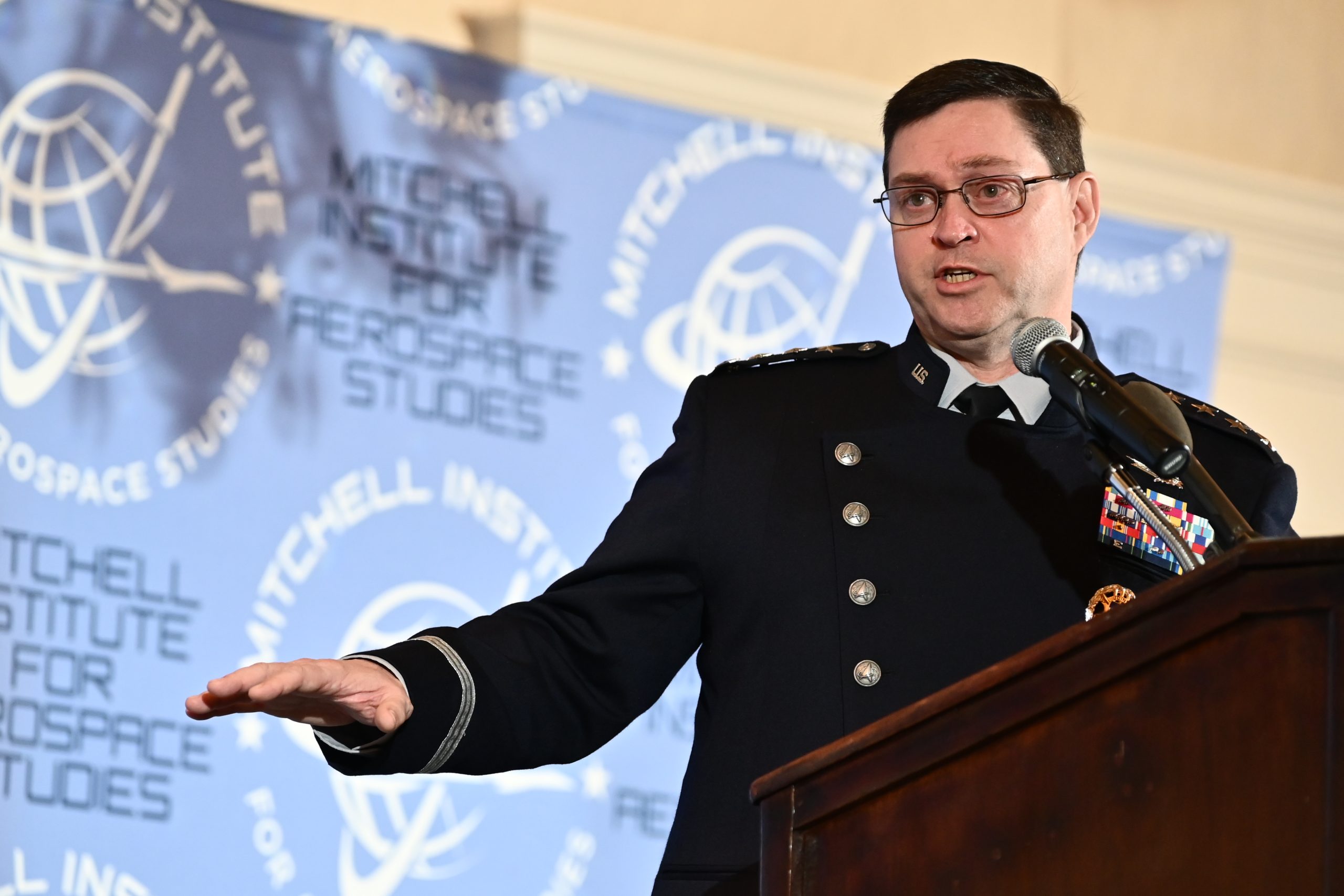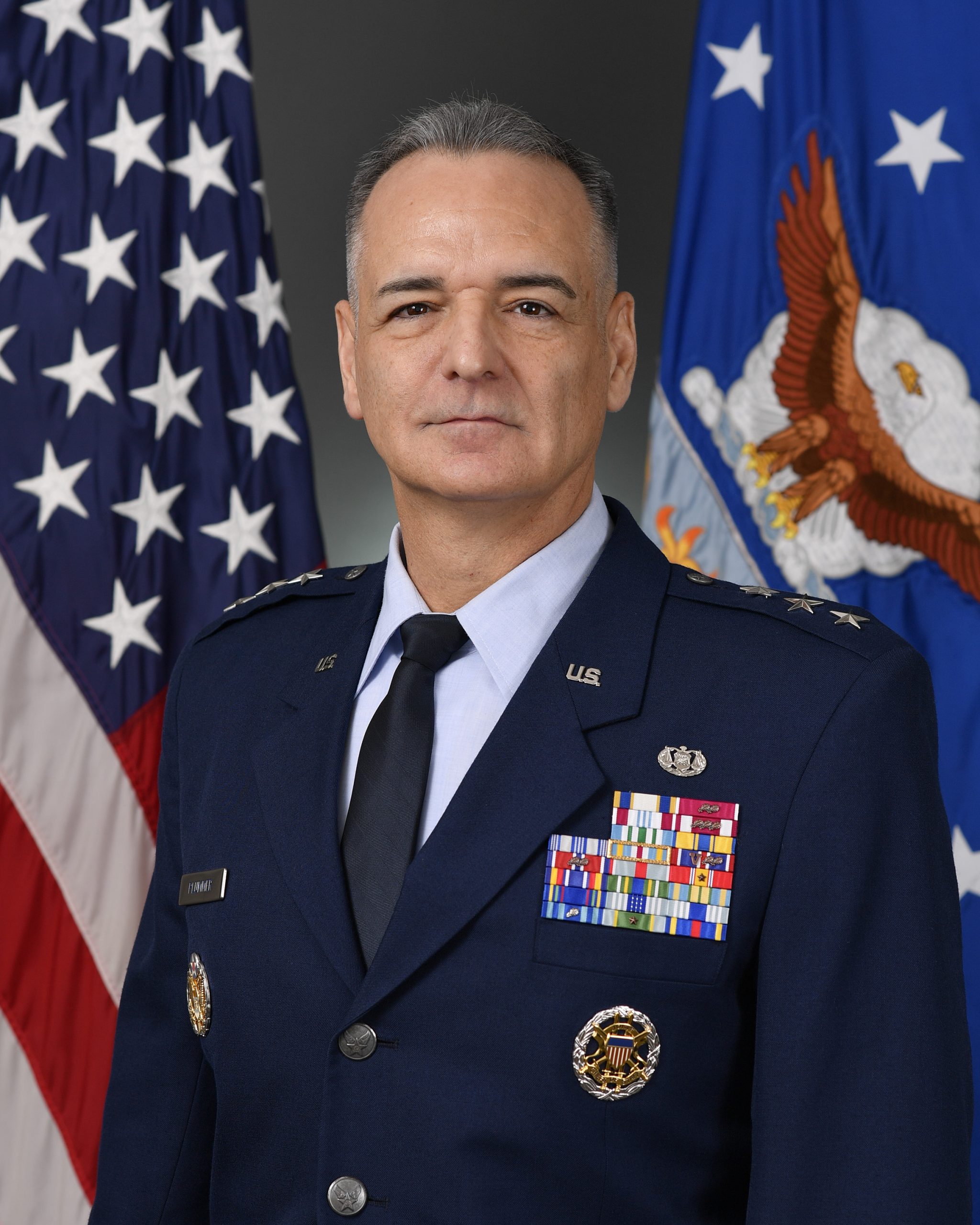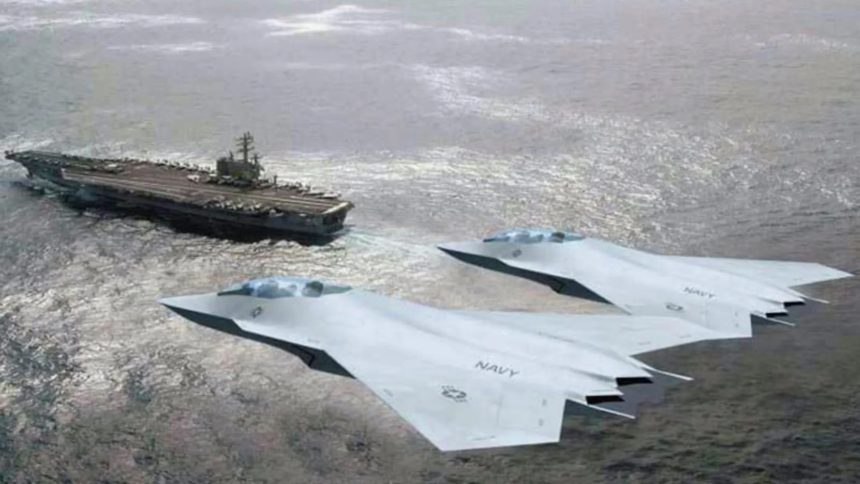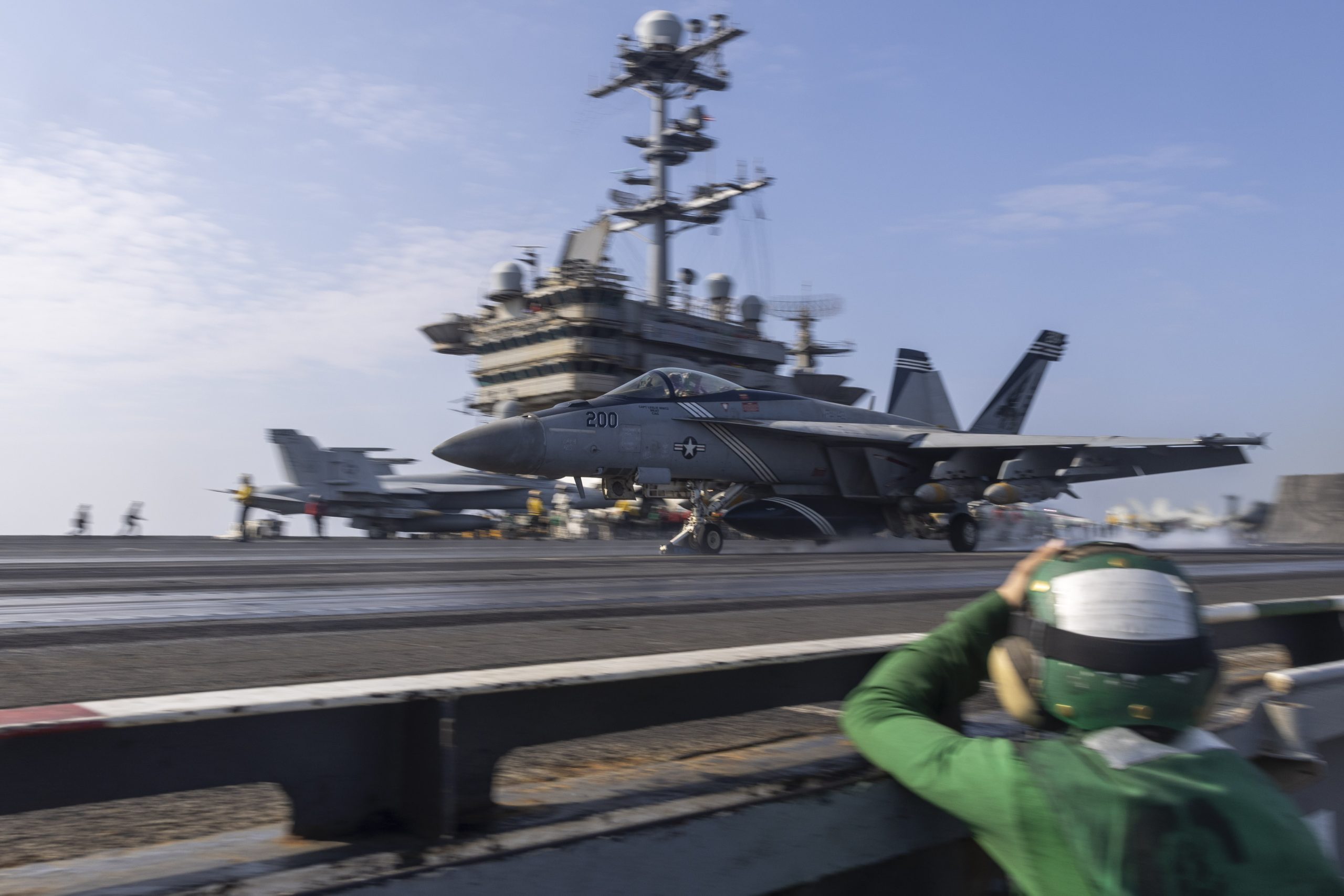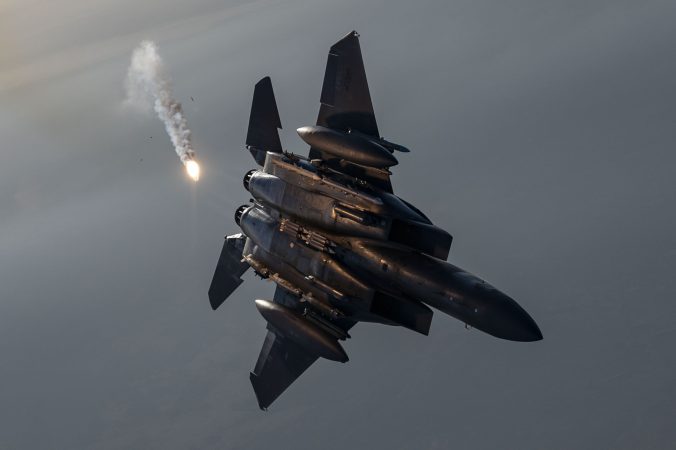AURORA, Colo.—The Air Force’s first two Collaborative Combat Aircraft are fighters, the first uncrewed aircraft to carry such a designation, Air Force Chief of Staff Gen. David W. Allvin announced in a keynote address at the AFA Warfare Symposium on March 3.
General Atomics’ CCA will be called the YFQ–42A and Anduril Industries’ CCA will be dubbed the YFQ–44A.
Under Air Force naming conventions, Y designates prototype, F means fighter, and Q means unmanned. Once a prototype moves into production, the Air Force would drop the Y from the prefix.
The chief said the unveiling represented far more than a name.
“We have two prototypes of Collaborative Combat Aircraft that were on paper less than a couple of years ago,” Allvin said. “For the first time in our history, we have a fighter designation in the YFQ-42 Alpha and the YFQ-44 Alpha—maybe just symbolic, but it’s telling the world that we are leaning into a new chapter of aerial warfare.”
CCA drones are designed to be “loyal wingmen” that can fly alongside new and existing crewed fighter jets, including the F-35 Lightning II. The Air Force believes a single manned fighter can control a larger number of drones than originally envisioned and can do so using less-sophisticated autonomous technology.
“It’s a recognition that we’re moving into a new era of manned human-machine teaming, as we build out our force design,” Allvin said in an interview with Air & Space Forces Magazine.
Anduril released a statement hailing the milestone.
“Together, in close partnership with the Air Force, we are pioneering a new generation of semi-autonomous fighter aircraft that is fundamentally transforming air dominance by delivering highly capable, mass-producible, more affordable, and more autonomous aircraft by the end of the decade,” said Anduril senior vice president of engineering Jason Levin. “It reinforces what we already knew: our CCA is a high performance aircraft designed specifically for the air superiority mission, acting as a force multiplier for crewed aircraft within the real constraints of cost and time.”
General Atomics sounded a similar refrain.
“YFQ-42A will be critical in securing air dominance for the Joint Force in future conflicts, leveraging autonomous capabilities and crewed-uncrewed teaming to defeat enemy threats in contested environments,” GA said in a statement. “It is designed to integrate seamlessly with current and next-generation crewed aircraft, expanding mission capabilities and ensuring continued air dominance. In short, YFQ-42A provides fighter capacity—affordable mass—at a lower cost and on a threat-relevant timeline.”
The service has become increasingly bullish on the CCA program, which is part of the Next-Generation Air Dominance portfolio, which may also include a penetrating crewed fighter. A decision of the future of the crewed NGAD fighter will be up to the next Secretary of the Air Force and the Trump administration.
“If we’re in this dangerous and dynamic time, I want to give the president as many options as we possibly can,” Allvin said in his keynote. “So that means yes, keep on the modernization. Yes, NGAD. Yes, CCA. … That’s what it is going to take.”
